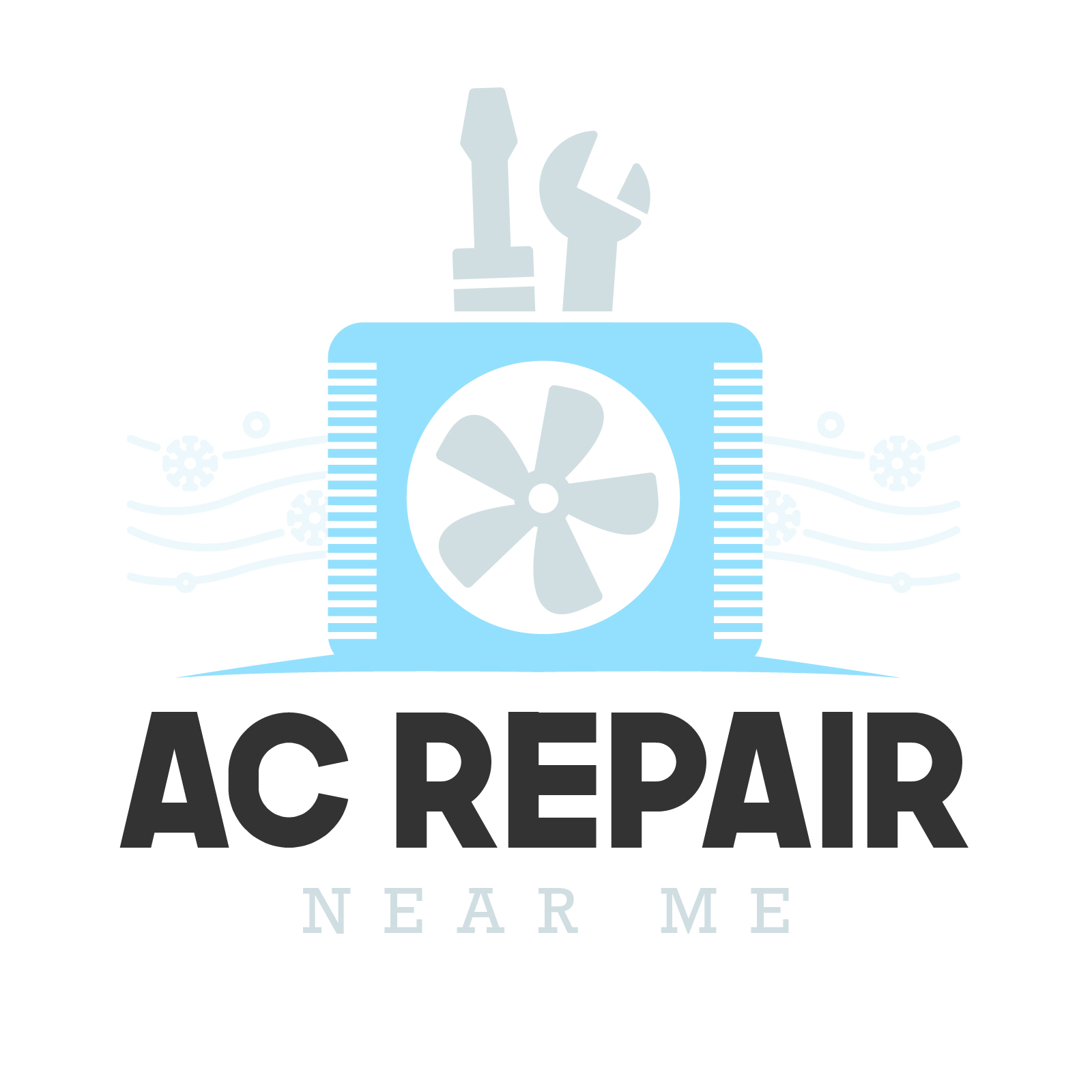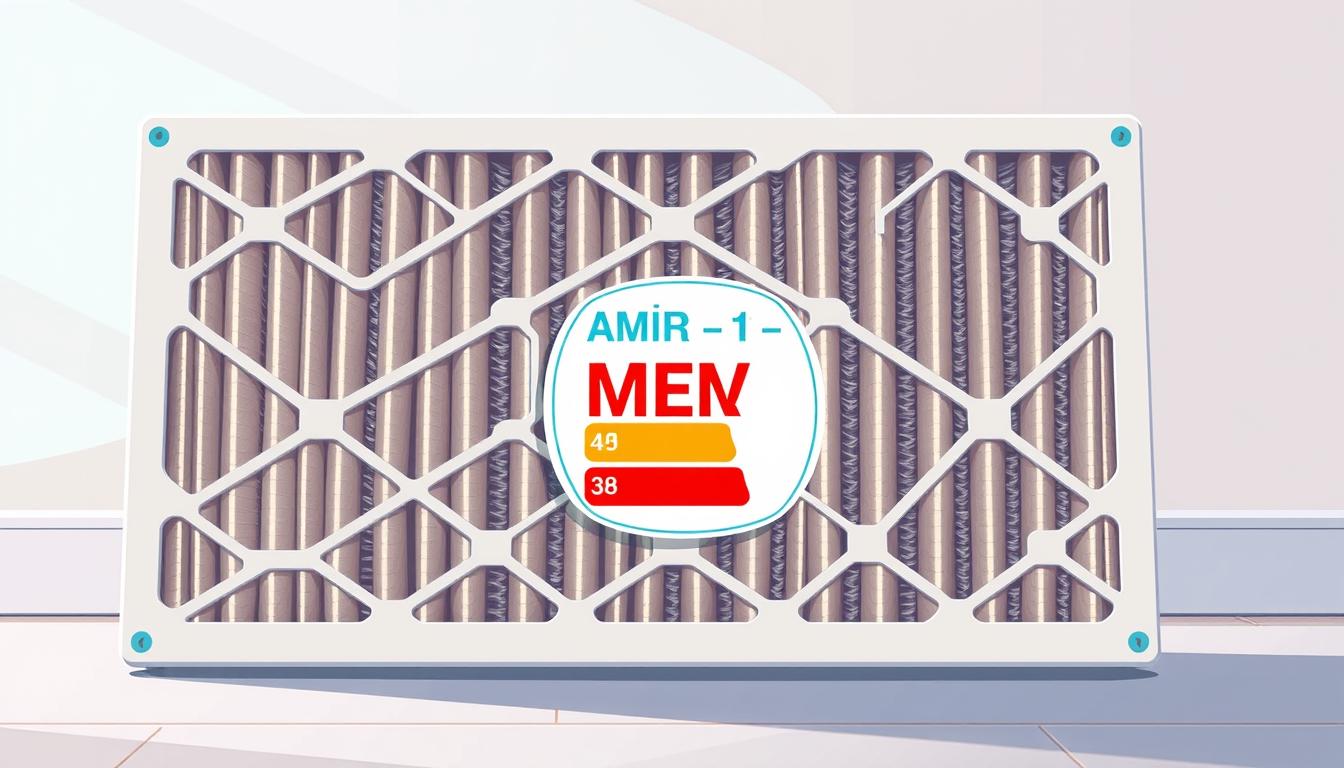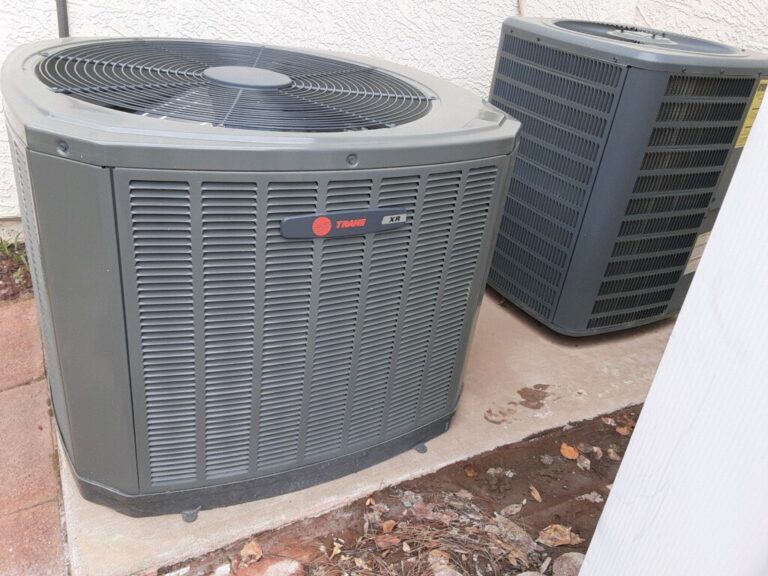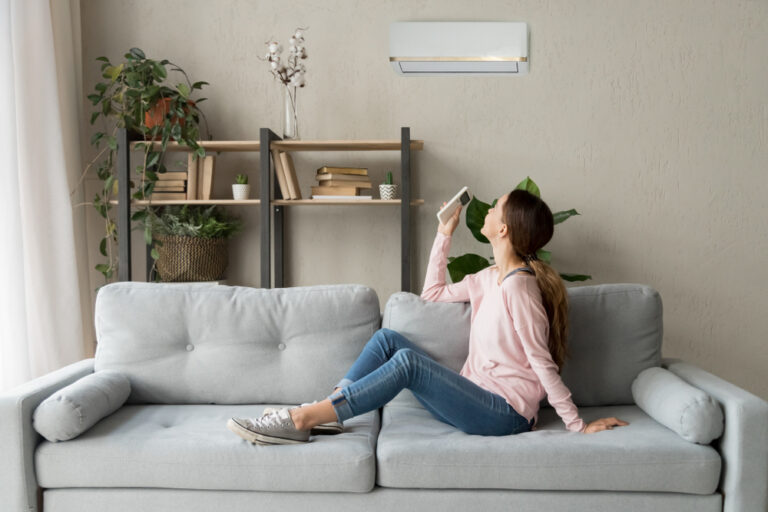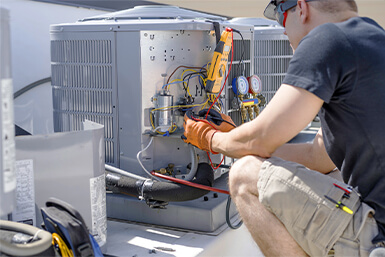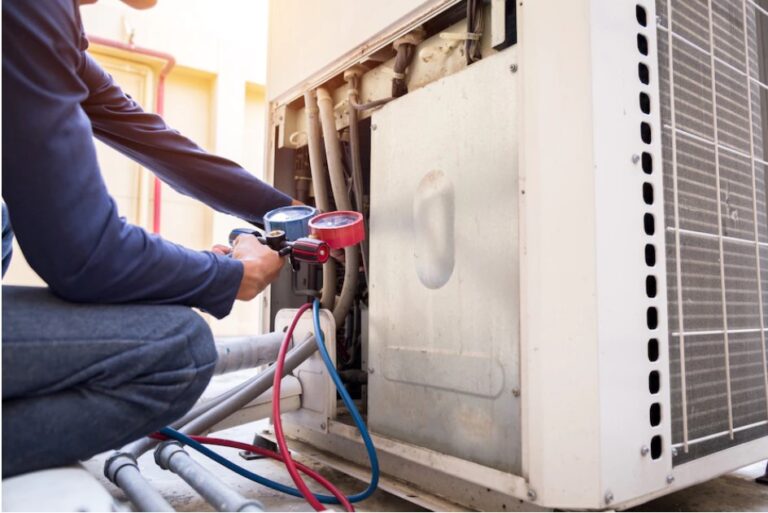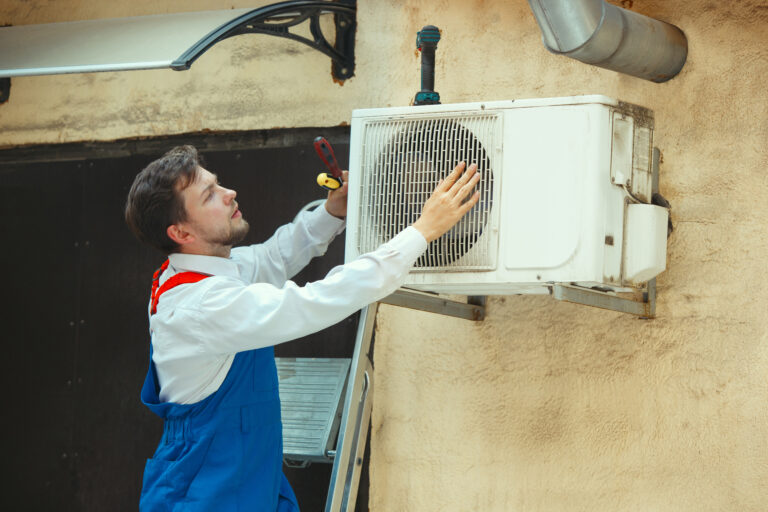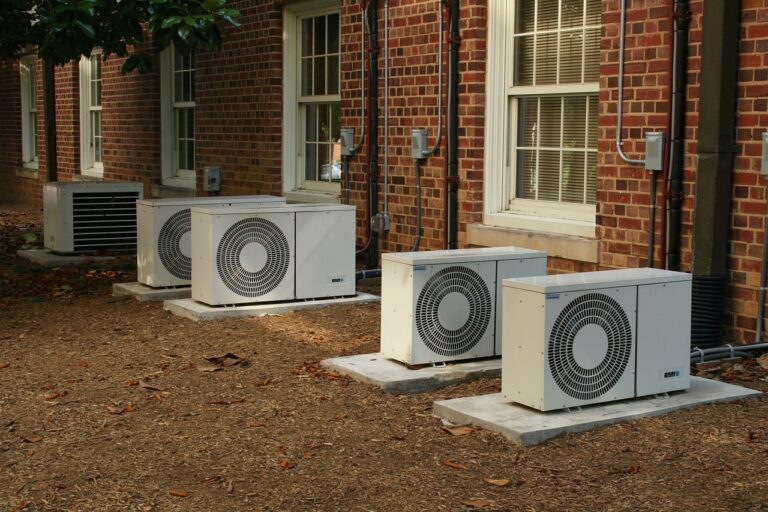MERV Ratings for AC Filters: What They Mean and Why They Matter
Understanding the Minimum Efficiency Reporting Value (MERV) is crucial for homeowners seeking to improve their indoor air quality. MERV is a nationally recognized measurement system used to rate air filters based on their ability to capture particles of specific sizes.
The rating system ranges from 1 to 16, with higher numbers indicating better filtration capabilities. Choosing the right filter with an appropriate MERV rating is essential for balancing air quality and HVAC system performance.
By understanding MERV ratings, homeowners can make informed decisions about their air filters, ultimately enhancing their indoor environment.
Key Takeaways
- Understanding MERV ratings is crucial for improving indoor air quality.
- MERV ratings measure a filter’s ability to capture particles of specific sizes.
- The right MERV rating balances air quality and HVAC system performance.
- Choosing the appropriate filter enhances the indoor environment.
- MERV ratings range from 1 to 16, with higher numbers indicating better filtration.
Understanding AC Filter MERV Ratings
Understanding MERV ratings is essential for homeowners to make informed decisions about their air filters. The MERV rating system provides a standardized way to measure the effectiveness of air filters used in HVAC systems.
What MERV Stands For
MERV stands for Minimum Efficiency Reporting Value. This term refers to a rating system designed to measure the effectiveness of air filters. The MERV rating indicates the filter’s ability to capture particles of various sizes, providing a clear picture of its overall performance.
The History and Development of the MERV Scale
In 1987, the American Society of Heating, Refrigerating, and Air Conditioning Engineers (ASHRAE) developed the MERV rating scale. Unlike other rating systems that focused solely on the number of particles passing through a filter, MERV was designed to balance particle filtration with energy efficiency. This approach ensures that filters are not only effective at capturing particles but also compatible with HVAC systems.
Why MERV Ratings Are Important for Your Home
MERV ratings are crucial for homeowners because they directly impact indoor air quality and HVAC system performance. By understanding MERV ratings, homeowners can select filters that meet their specific needs, whether it’s improving air quality or protecting their HVAC system. A suitable MERV rating helps maintain a healthy indoor environment while ensuring the longevity of the HVAC system.
| MERV Rating | Filter Effectiveness | Application |
|---|---|---|
| 1-4 | Basic filtration, captures large particles | Residential HVAC systems with minimal air quality concerns |
| 5-8 | Moderate filtration, captures smaller particles | Residential HVAC systems with average air quality concerns |
| 9-12 | Higher filtration, captures fine particles | Residential HVAC systems with significant air quality concerns |
The MERV Rating Scale Explained
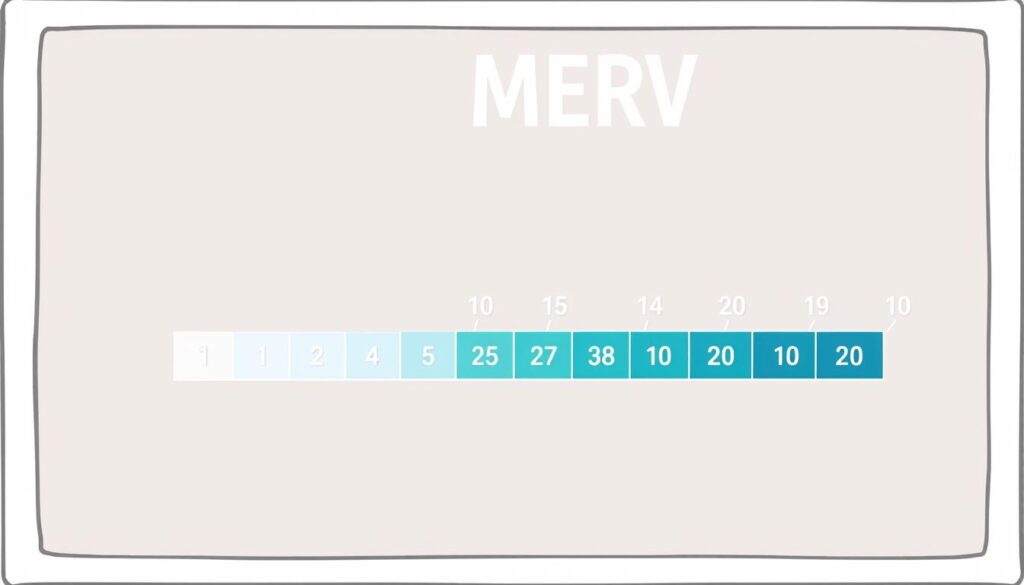
The MERV rating scale, ranging from 1 to 16, is used to measure the filtration efficiency of air filters. This scale is crucial for understanding the capabilities and limitations of various air filters used in HVAC systems.
MERV 1-6: Basic Filtration
Filters with MERV ratings between 1 and 6 are considered basic filtration. They are primarily used as prefilters to remove large, coarse particles and debris. While they protect equipment, their ability to capture smaller particles is limited. These filters are not ideal for residential use where air quality is a concern.
MERV 7-12: Mid-Range Filtration
MERV 7-12 filters offer mid-range filtration, capturing a broader range of particles, including dust, pollen, and pet dander. These filters are suitable for most residential applications, providing a balance between filtration efficiency and airflow. They are effective in improving indoor air quality for general household needs.
MERV 13-16: High-Efficiency Filtration
Filters rated MERV 13-16 are considered high-efficiency, capable of capturing very fine particles, including those as small as 0.3 to 1.0 micron. These filters are ideal for homes with specific air quality concerns, such as allergy sufferers or homes near high-pollution areas. They provide the highest level of filtration, significantly improving indoor air quality.
In summary, the MERV rating scale is a vital tool for selecting the appropriate air filter for your HVAC system. By understanding the different ranges of MERV ratings and their filtration capabilities, homeowners can make informed decisions to improve their indoor air quality.
- MERV 1-6: Basic filtration for large particles and equipment protection.
- MERV 7-12: Mid-range filtration for common household particles.
- MERV 13-16: High-efficiency filtration for fine particles and specific air quality concerns.
What Different MERV Ratings Can Filter
The MERV rating of an air filter is a key indicator of its filtration efficiency and the size of particles it can remove. Air filters with different MERV ratings are designed to capture a wide range of airborne contaminants, from larger particles like dust and pollen to smaller ones such as bacteria and smoke.
Particle Sizes and Types
Airborne particles vary significantly in size and type. Particle size is measured in microns, with smaller particles posing a greater challenge for filtration systems. For instance, dust mites, pollen, and mold spores are common allergens that can be found in homes, while bacteria and viruses are even smaller and require more efficient filters to capture.
Allergens, Dust, and Pollen
Filters with lower MERV ratings (1-6) can capture larger particles such as dust, pollen, and carpet fibers, albeit with a relatively low efficiency of around 20%. These filters are basic and can remove particles between 0.3 to 10 microns. For homes with allergy sufferers, filters with higher MERV ratings are more effective in removing allergens like dust mites and pollen.
Bacteria, Mold Spores, and Smoke
Higher MERV-rated filters (8-13) can remove smaller particles, including mold spores, lead dust, and auto fumes, with an effectiveness ranging from 20-85%. The highest MERV-rated filters (14-20) are capable of capturing even smaller contaminants like bacteria, smoke, and viruses, often at levels of 90% or better. These filters are crucial for homes that require a high level of air purification.
Comparison Chart of Filtration Capabilities
To better understand the filtration capabilities of different MERV ratings, refer to the following comparison chart:
| MERV Rating | Particle Size | Contaminants Removed | Effectiveness |
|---|---|---|---|
| 1-6 | 0.3-10 microns | Dust, pollen, carpet fibers | 20% |
| 8-13 | Smaller particles | Mold spores, lead dust, auto fumes | 20-85% |
| 14-20 | Very small particles | Bacteria, smoke, viruses | 90%+ |
Understanding the capabilities of different MERV ratings helps homeowners choose the right filter for their specific needs, ensuring a healthier indoor environment.
Balancing Filtration and System Efficiency
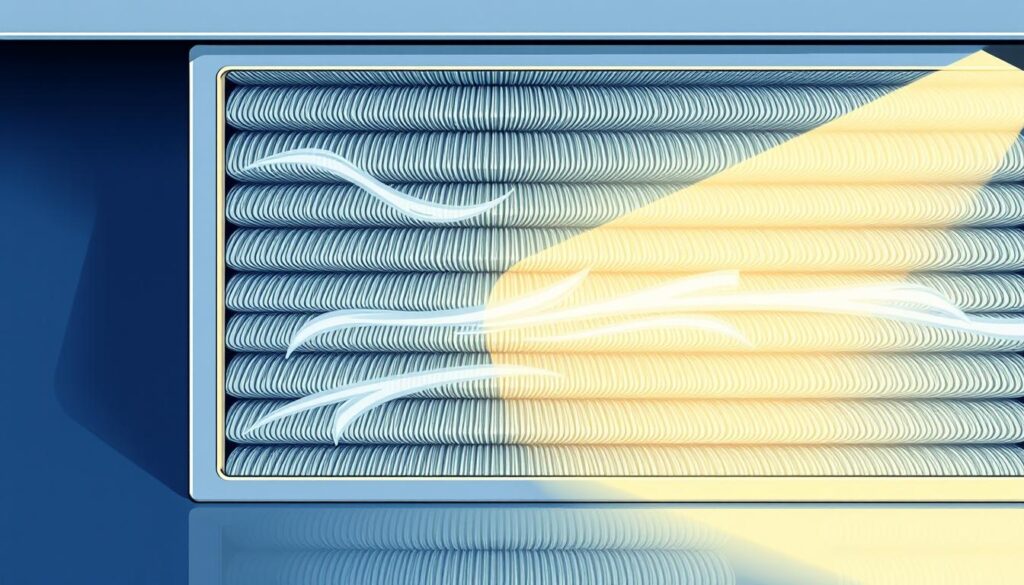
Achieving optimal air quality while maintaining HVAC system efficiency is a delicate balance. As we’ve discussed, higher MERV ratings indicate better filtration capabilities, but they can also impact your system’s performance.
How Higher MERV Ratings Affect Airflow
A higher MERV rating means that the filter can capture smaller particles, improving indoor air quality. However, this increased filtration efficiency comes at a cost: reduced airflow. As the filter becomes denser to capture more particles, it restricts the flow of air through the HVAC system. This restriction can cause the system to work harder to maintain the desired air circulation, potentially leading to decreased system performance.
- Increased resistance to airflow due to denser filters
- Potential decrease in system performance
- Impact on overall HVAC system efficiency
Energy Consumption Considerations
The impact of higher MERV ratings on energy consumption is a critical consideration. When an HVAC system has to work harder due to restricted airflow, it consumes more energy. This increased energy consumption can lead to higher utility bills, negating some of the benefits of improved air quality. It’s essential to weigh the benefits of higher filtration against the potential increase in energy costs.
To minimize the impact on energy consumption, it’s crucial to:
- Choose a filter that balances filtration needs with system capabilities
- Ensure proper filter sizing for your HVAC system
- Regularly maintain your HVAC system to optimize performance
Choosing the Right MERV Rating for Your Home
Choosing the correct MERV rating for your AC filter is a decision that affects not just your HVAC system’s efficiency, but also your health. The ideal MERV rating strikes a balance between effective air filtration and maintaining your system’s airflow and efficiency.
Assessing Your Home’s Air Quality Needs
To determine the right MERV rating, start by assessing your home’s air quality needs. Consider factors such as your location, the surrounding environment, and any existing air quality issues. For instance, homes in areas with high levels of outdoor pollution or near busy roads may require higher MERV ratings to effectively filter out contaminants.
Considering Health Concerns and Allergies
If someone in your household suffers from allergies or asthma, a higher MERV rating can be beneficial. Filters with ratings between 11 and 13 are often recommended for such households because they can capture smaller particles, including many allergens and irritants. This can significantly improve indoor air quality and alleviate symptoms.
Pets and Environmental Factors
Pets and environmental factors also play a crucial role in determining the appropriate MERV rating. Pet owners, for example, may need a higher MERV rating to capture pet dander effectively. Similarly, if you live in an area prone to wildfires or have a smoker in the house, a higher rating can help filter out smoke particles and other pollutants.
HVAC System Compatibility
It’s equally important to consider your HVAC system’s compatibility with the chosen MERV rating. Higher MERV ratings, while offering better filtration, can restrict airflow if your system is not designed to handle them. Check your system’s specifications to ensure it can accommodate the filter you choose. A MERV 11 filter, for example, is often considered a good balance for most homes as it offers excellent filtration without overly straining the HVAC system.
In conclusion, selecting the right MERV rating involves a careful assessment of your home’s specific needs, including air quality concerns, health considerations, and HVAC system capabilities. By considering these factors, you can choose a filter that not only improves your indoor air quality but also maintains the efficiency and longevity of your HVAC system.
Recommended MERV Ratings for Different Situations
The ideal MERV rating varies depending on your household’s specific needs and circumstances. Different factors such as health concerns, pets, and environmental conditions can influence the optimal MERV rating for your home.
Standard Homes Without Special Concerns
For standard homes without special concerns, a MERV rating between 8 and 10 is typically recommended. This range provides a good balance between filtration efficiency and system performance. As stated by experts, “A MERV 8 air filter can be good enough for the average household.” You can learn more about changing your HVAC system’s air filters here. A MERV 8 filter can capture common household dust, pollen, and mold spores, improving indoor air quality without putting excessive strain on your HVAC system.
Homes With Allergy or Asthma Sufferers
Homes with residents who suffer from allergies or asthma require higher MERV-rated filters to capture smaller particles and allergens. A MERV rating of 11 to 13 is often recommended for these households. These filters can capture particles as small as 0.3 microns, including many allergens and irritants that can exacerbate respiratory issues. As the saying goes, “Clean air is crucial for healthy living.” Using a higher MERV-rated filter can significantly improve the indoor air quality and provide relief for those suffering from allergies and asthma.
Homes With Pets or Near High-Pollution Areas
Homes with pets or those located near high-pollution areas also benefit from higher MERV-rated filters. Pets introduce additional allergens like dander into the air, while high-pollution areas can increase the amount of particulate matter entering your home. A MERV rating of 11 or higher can help reduce pet dander and capture more pollutants, improving the overall indoor air quality. As pet owners know, keeping the air clean is essential for both human and animal health. For instance, a MERV 11 filter can capture pet dander and other particles that lower MERV-rated filters might miss.
Common Misconceptions About MERV Ratings
Common misconceptions about MERV ratings can lead to suboptimal filter selections and decreased HVAC efficiency. Many homeowners are unaware of the implications of choosing the right MERV rating for their air filters.
Higher Is Not Always Better
Ahigher MERV ratingisn’t always better for every situation. While filters with higher ratings can capture more particles, they can also put additional strain on your HVAC unit, potentially increasing your energy bill. In most cases, a filter with a mid-range MERV rating is sufficient for standard homes without specific air quality concerns.
MERV Ratings vs. Other Filter Rating Systems
Other filter rating systems, such as MPR (developed by 3M) and FPR (developed by Home Depot), exist alongside MERV. Although these systems measure similar factors, they have different rating scales. TheMERV ratingis considered superior because it’s an international standard, making it easier to compare filters across different brands.
Impact on HVAC System Lifespan
The choice of MERV rating can impact the lifespan of yourHVAC system. Using a filter with a MERV rating that’s too high for your system can strain it, potentially leading to premature wear and tear. It’s crucial to select a filter that balances air quality needs with system compatibility.
By understanding these aspects, homeowners can make informed decisions about their air filters, avoiding common misconceptions and ensuring both optimal air quality and HVAC system performance.
Proper Maintenance of MERV-Rated Filters
Proper maintenance of MERV-rated filters is crucial for optimal HVAC system performance. Neglecting to change your air filter can cause your A/C to work overtime, resulting in higher energy bills. Regular maintenance ensures your unit works as it should, maintaining good air quality and system efficiency.
Recommended Replacement Schedules
The frequency for changing MERV-rated filters depends on your home’s air quality and HVAC system usage. Generally, filters should be changed every 1-3 months. For instance, MERV 11 filters are typically replaced every 3 months. Factors such as pets, seasonal changes, and system usage can affect this schedule.
Signs Your Filter Needs Changing
Key signs that indicate a filter needs changing include visible dirt accumulation, reduced airflow, or increased dust in the home. If you notice any of these signs, it’s likely time to replace your filter. Regularly checking your filter can help maintain optimal system performance and air quality.
Tips for Maximizing Filter Efficiency
To maximize filter efficiency, ensure proper installation techniques and a good seal around the filter. Regular filter maintenance not only improves air quality but also enhances HVAC system performance and energy efficiency. Proper disposal and environmentally responsible practices for replacing filters are also important considerations.
Improving Your Indoor Air Quality Beyond MERV Ratings
Improving indoor air quality involves more than just understanding MERV ratings; it requires a multi-faceted approach. While selecting the right MERV-rated filter is crucial, there are additional strategies to further enhance your home’s indoor air quality.
Beyond air filtration, complementary approaches such as air purifiers, ventilation improvements, and humidity control can significantly contribute to cleaner, healthier air. Regular home cleaning practices also play a vital role in reducing airborne particles and improving overall air quality.
It’s equally important to address pollution sources within the home, such as cooking fumes, cleaning products, and off-gassing from furniture. Proper ventilation works hand-in-hand with filtration to maintain healthy indoor air, highlighting the benefits of fresh air exchange.
To create a comprehensive indoor air quality strategy, consider incorporating appropriate MERV filtration alongside other approaches. This may include assessing the need for professional air quality testing and understanding how to interpret the results to make informed decisions about your filtration needs.
By adopting a holistic approach to indoor air quality, homeowners can significantly improve the health and comfort of their living environment. This involves not just the right MERV rating but a combination of strategies tailored to the specific needs of the home and its occupants.
